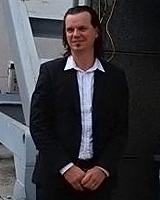Plastic bus reduces fuel costs by 5%
A normal motor coach weighs around 18 tonnes. By using fibre-reinforced plastic in the bodywork instead of steel, the weight may be reduced by one tonne. This results in reduced fuel consumption and a bus that is around 5% cheaper, according to researchers at KTH.

Researchers from a number of universities and companies in Europe in a major EU project called Litebus have, since 2006, been analysing whether it is possible to build lighter transport vehicles in order to achieve the EU’s objective of reduced fuel consumption. From Sweden, the researchers Anna Hedlund-Åström and Magnus Burman from the School of Technology at KTH have participated in the work and they have been responsible for life-cycle cost calculations (LCC).
“If we look at this over a period of 15 years, the light-weight bus made of composite material will be around EUR 50,000 cheaper. This is because it is lighter which in turn means that the bus will consume less energy. By saving weight on the chassis and the bodywork, a positive weight spiral is initiated which means that you can use a smaller engine, lighter wheel suspension etc. With composite materials, maintenance costs will also be lower,” says Magnus Burman.
This applies to motor coaches. According to Magnus Burman, the savings for city buses would be even better.
“Because driving in a city involves a lot of stopping and starting and air resistance does not matter, city buses made from composite materials could provide even better savings,” says Magnus Burman.
He adds that the construction is unique, and that they have developed composite materials as structural elements with the sides and roof panels in a sandwich material. This means fewer elements need to be joined together by gluing which offers the possibility of rational production.
And the bus is not only lighter, it is also extremely durable according to the rollover tests that were carried out at the end of the project.
“There is a crash requirement for buses, and this is the rollover test. We have now shown that this composite bus can easily pass this test,” says Magnus Burman.
The bus manufacturers that have participated in the project (from Portugal, Caetanobus, from Spain, Sunsundequi and from Italy, Mauri) will make use of this knowledge and allow the use of the material in future bus constructions.
For more information, contact Magnus Burman at mburman@kth.se or ring +46705 - 49 64 50.
Peter Larsson

